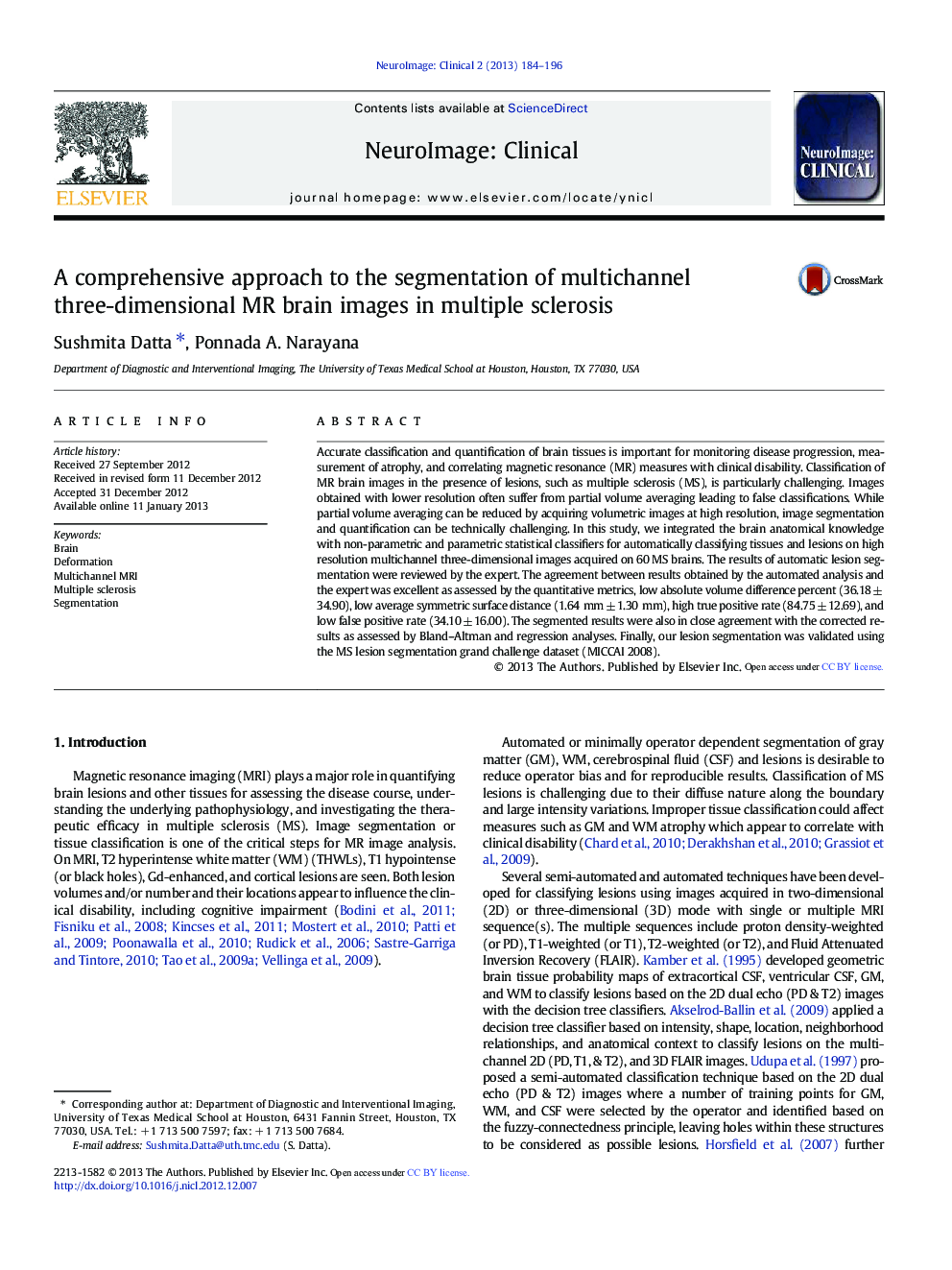| Article ID | Journal | Published Year | Pages | File Type |
|---|---|---|---|---|
| 3075502 | NeuroImage: Clinical | 2013 | 13 Pages |
Accurate classification and quantification of brain tissues is important for monitoring disease progression, measurement of atrophy, and correlating magnetic resonance (MR) measures with clinical disability. Classification of MR brain images in the presence of lesions, such as multiple sclerosis (MS), is particularly challenging. Images obtained with lower resolution often suffer from partial volume averaging leading to false classifications. While partial volume averaging can be reduced by acquiring volumetric images at high resolution, image segmentation and quantification can be technically challenging. In this study, we integrated the brain anatomical knowledge with non-parametric and parametric statistical classifiers for automatically classifying tissues and lesions on high resolution multichannel three-dimensional images acquired on 60 MS brains. The results of automatic lesion segmentation were reviewed by the expert. The agreement between results obtained by the automated analysis and the expert was excellent as assessed by the quantitative metrics, low absolute volume difference percent (36.18 ± 34.90), low average symmetric surface distance (1.64 mm ± 1.30 mm), high true positive rate (84.75 ± 12.69), and low false positive rate (34.10 ± 16.00). The segmented results were also in close agreement with the corrected results as assessed by Bland–Altman and regression analyses. Finally, our lesion segmentation was validated using the MS lesion segmentation grand challenge dataset (MICCAI 2008).
► Segmentation of 3D multichannel brain images to various tissues and lesions ► Integration of statistical classifiers and brain anatomy improves segmentation. ► Automated technique minimizes user intervention with reproducible results. ► Quantitative evaluation shows excellent tissue and lesion classification.
